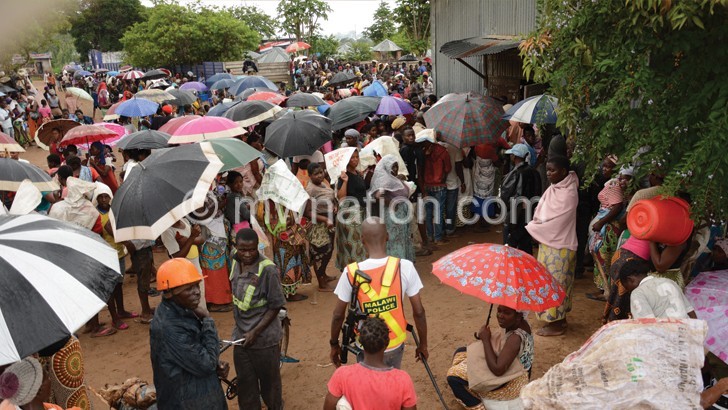Maize scarcity drives up prices
Scarcity of maize on the Malawi market has catapulted prices for the commodity, which is the country’s staple, a new report shows.
At an average of K314 per kilogramme (kg), prices of maize on the market were 98 percent higher compared to the same period last year.

The report published by the International Food Policy Institute (Ifpri) last month indicates that average retail maize prices are highest in the Southern Region, but are lowest in the North.
It said in the South maize is selling at K29 per kg higher than in the Centre where maize prices are K71 per kg higher than in the North.
The largest price increases have been recorded in Mzuzu and Salima markets (17 percent), followed by Nsanje market (13 percent) while marginal price declines were reported in three markets (Mangochi, Chitipa and Mpondabwino).
Of the 26 markets monitored by Ifpir across Malawi, Admarc sales, at K150 per kg were reported in 17 markets (Chitipa, Karonga, Rumphi, Mzuzu, Mzimba, Mchinji, Salima, M’baluku, Mangochi, Mwanza, Mpondabwino, Luchenza, Mulanje, Chikwawa, Ngabu, Bangula, and Nsanje).
The prices are, however, still below the revised minimum price of K310 per kg.
“Maize prices in Lunzu [K360 per kg] are now higher than in most east African capitals, while prices in Mitundu [K320 per kg] are higher than in Harare, Kampala, Lusaka, and Nairobi,” reads the market
On January 29 2020, Ministry of Agriculture, Irrigation and Water Development revised the purchase price of maize by Admarc to K310 per kg in response to maize shortage in some parts of the country.
Initially, government set the minimum maize price at K150 per kg. However, the price was revised upwards to K200 per kg in August before a further revision to K230/kg in October and again to K250 per kg in November.
This follows traders’ unwillingness to sell maize to Admarc and the strategic grain reserves (SGR), the National Food Reserve Agency (NFRA) at previously set prices.
Currently, SGR had a balance of just under 12 000 metric tonnes (MT) of maize at the end of January, of which approximately 5 225 MT has already been committed.
Admarc has stocks of about 10 375 MT mostly in Central and Northern Malawi, while the private sector has between 35 250 and 42 600 MT, according to two recent stock verification exercises, of which around 30 000 MT is already committed.
In the 2019/20 National Budget, Parliament approved K10 billion for the NFRA for the purchase of maize. However, NFRA records show that there is only 12 000 MT in the SGRs, which is against the recommended 217 000 MT, comprising 95 000 MT buffer stock, 8 000 MT emergency stock, 76 000 MT safetynet stock for non-emergency response and 38 000 MT stabilisation stock.
NFRA chief executive officer Nasinuku Saukira told Budget and Finance Committee members last month that the money allocated to them in the 2019/20 National Budget is idle because there is no maize to buy.
Grain Traders Association of Malawi president Grace Mhango while observing that maize prices in other parts of Malawi have hit a record high price of K400 per kg, urged traders to respond to the price adjustment by government “and deliver the most needed maize to government so that it can save the needy”. Maize is an important crop to the country, and as part of food, contributes about 45.2 percent to the Consumer Price Index (CPI), an aggregate basket for computing inflation.





